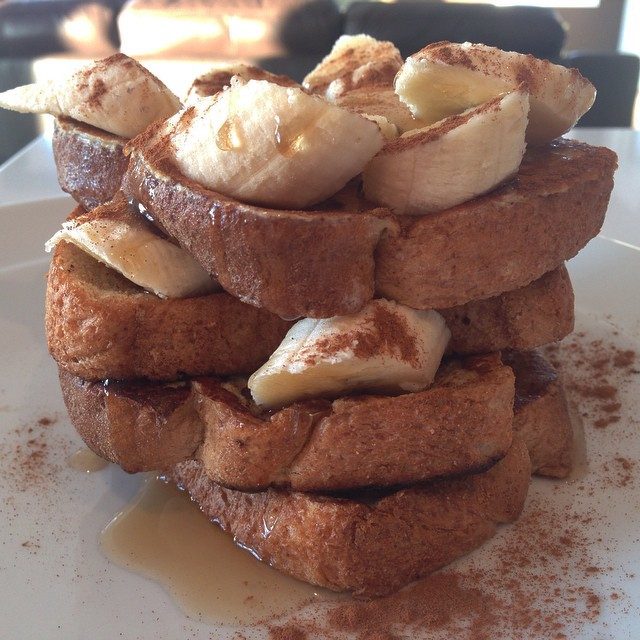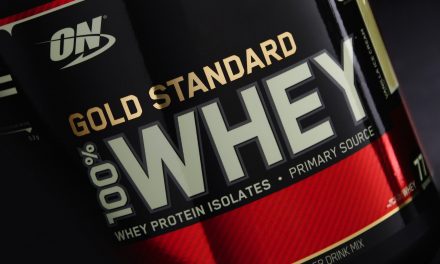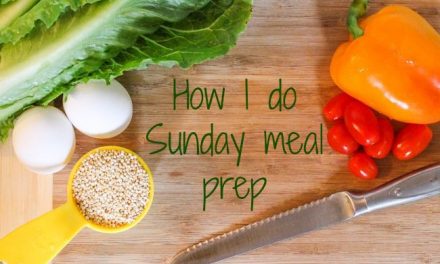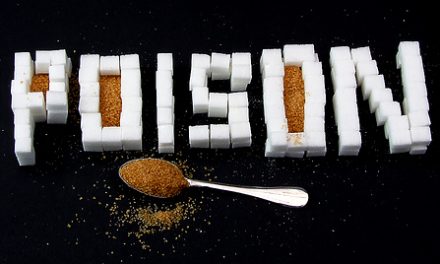Many fitness people who cook with whey protein powder think they can treat it the same way they do flour. Newsflash! You can’t.
You have to always account for its particularity and cook it on its own terms. This is the case with most protein powders, but it’s particularly critical to understand with whey. If you don’t, the potential for failure looms large. Whatever you’re making can turn out rubbery, “cardboard-y,” extremely dry and, well, pretty much impossible to (pleasurably) consume!
Let me give you an example: protein muffins. The first time I made a protein muffin, I followed a recipe I found online. It called for three egg whites and one scoop of whey, to be stuck in a mug and microwaved for a minute. A child could ace this recipe, I thought to myself.
Round and round went my mug inside the microwave. Mesmerized, I watched the mixture rise and rise until it could rise no more. After the minute had passed, this monstrosity began shrinking as quickly as it had mushroomed. I removed it carefully, and my shoulders slumped. My muffin was as deflated as my ego.
It looked like a chewed-up plastic cake, the kind you have to pull out of your dog’s mouth after he’s been mischievously playing with a child’s cookery play set. That’s when I took my first bite and realized that, while the muffin tasted more or less okay, chewing it was like chewing on a rubber sole. Horrendous.
I had a similar experience when I first made protein pancakes. I mixed two scoops of whey with three egg whites and a couple scoops of oats.
Result: A bland and ultra rubbery pancake that soured my taste buds and broke my heart. My second abject failure made me want to give up on the idea of ever again cooking with whey.
You will find a lot of recipes online for protein muffins and pancakes that, like the above, leave you feeling as if you’re eating a tire. It doesn’t have to be this way, though. It never should. You can work with whey to create incredibly fluffy and moist pancakes. You can use it to make soft, moist, and delicious protein muffins, muffins that no one will eye suspiciously and bite with the unease of a vampire. Make muffins that no one will be able to resist.
Rules Of The Right Of Whey

There are four rules you must know to successfully cook with whey. Master them, and become master of the protein universe. You may use these rules to bake cakes as well but, for now, let’s stick to pancakes and muffins.
Rule 1: Never-NEVER-bake or panfry a batter that is more than ¼ whey. This is because, naturally, whey has a tendency to go dry, rubbery, and “cardboard-up” (if you allow me to paraphrase Steve Spurrier and coin that expression). You have to offset this tendency. How? By making sure that the rest of your ingredients weigh it down and add enough moisture to counter the whey.
Rule 2: You must always use what I call a primary moisturizer. This can be cottage cheese, pumpkin puree, Greek yogurt, or a cooked sweet potato. It can also be fruits such as applesauce, apples, bananas or berries.
Rule 3: You always need to have a type of flour in your batter. This will combine with your whey and give volume to your final product. My favorite flours to use are oats, coconut flour, almond flour, oat flour, amaranth flour, chickpea flour, buckwheat flour or quinoa flour. These are excellent gluten-free, high-protein, and high-fiber flours.
Rule 4: Always use a binding substance like egg whites, whole eggs or a combination of both. By following the above rules, you’ll be able to make anything and everything with whey?from cakes and muffins to pancakes and breads! The more you play with it, the more delicious variations of your protein favorites will result.
Add nuts, seeds, and any additional powders (e.g. cocoa, maca powder, lucuma powder), spices (e.g. cinnamon, cloves, ginger) and flavorings (e.g. vanilla essence, orange peel, almond essence) to your batter too. The sky is the limit to what you can make once you understand the basics of whey protein cooking! Experiment with your combinations. Find out what you like and don’t like. Combine lemon peel with poppy seeds, cinnamon with vanilla, cocoa with passion fruit! Try exotic ingredients. Be creative with your flavorings and remember to always build on what you learn along the “whey.”
Final Tips of the Trade
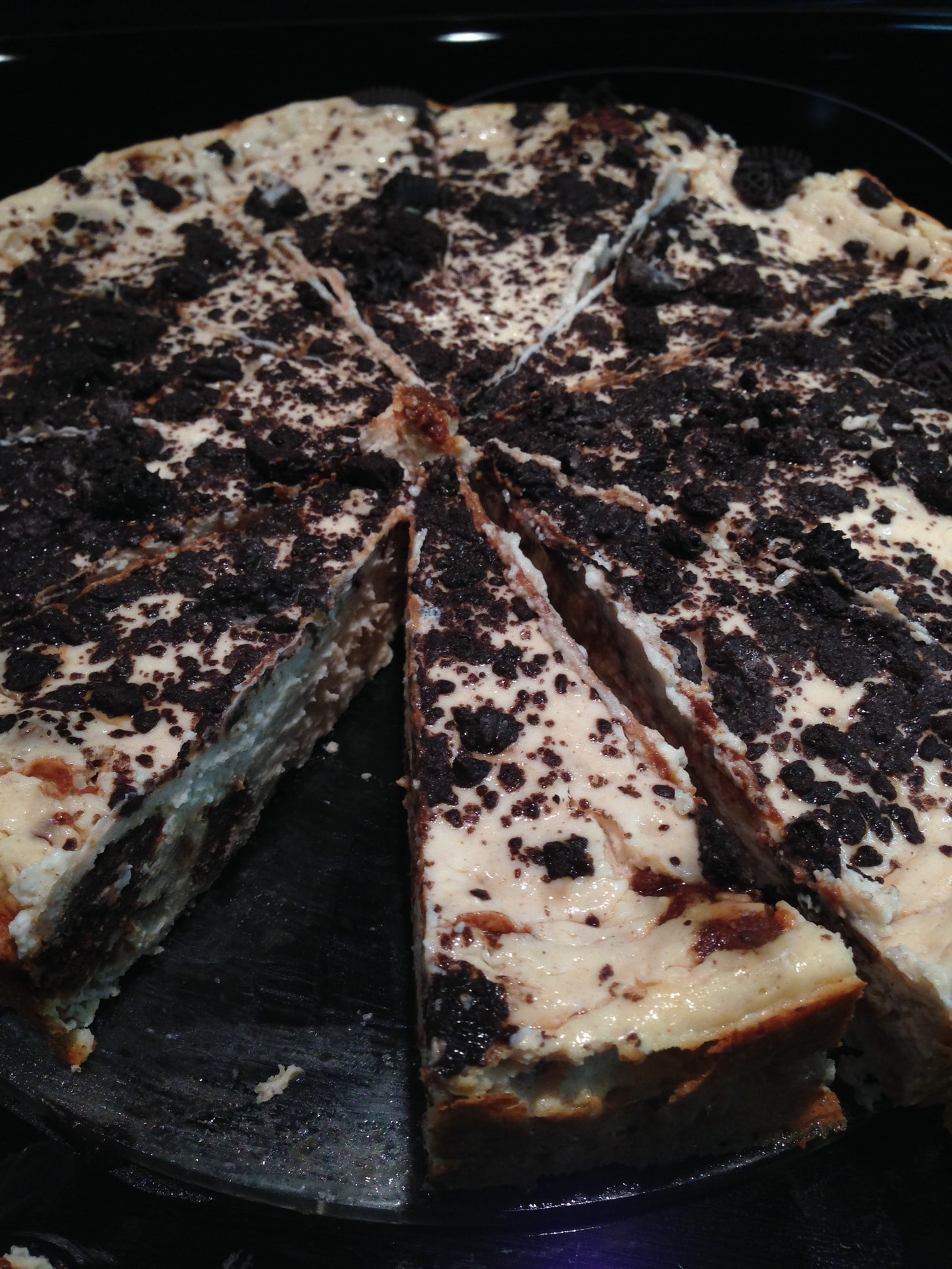
TIP 1 ) EXCHANGING FLOUR FOR PROTEIN POWDER – Rule of thumb is 1/3 of flour in recipe per scoop of protein powder, but you will need to understand the science behind the art of flour exchanges with whey protein:
– Substitute up to 1/3 of the flour in a recipe with protein powder
- -You can replace white flour with oat flour 1:1 (so same conversion) but you need to add a rising material as the oats don’t have gluten. So for every ¼ c of oat flour you use add 1/8 t baking soda and 1/8 t baking powder. This exchange works in all types of recipes.
- – You can replace white or wheat flour with Almond or Cashew meal 1:1 also but same as above, you need to add a rising material. So for every 1/2 c of nut flour you use add 1/8 t baking soda and 1/8 t baking powder. Nut flours are great to use in cookie, bread and cake recipes
- – Black beans can replace flour 1:1 but this really only works in brownie recipes – please comment below if you have found success with other creations
- – Coconut flour is a tasty low carbohydrate flour that can replace white or wheat flour 3:1- for example 1 c of flour = 1/3 c of coconut flour. Now I wouldn’t replace all the flour with coconut flour- actually, don’t use more than ½ c of it because the coconut flour gets a bitter taste. **IMPORTANT INFO** if using this flour you will need to reduce cooking temps by 25 degrees
I know- this all sounds confusing right? Let me run down an example from a recipe:
If a muffin recipe called for 1 ½ c flour:
1/3 would be protein powder = ½ c
1/3 can be almond or any nut flour = ½ c
1/3 can be any flour = ½ c (If using coconut flour it would be 2 T +2 t)
You always need to have a type of flour in your batter. This will combine with your whey and give volume to your final product. My favorite flours to use are oats, coconut flour, almond flour, oat flour, amaranth flour, chickpea flour, buckwheat flour or quinoa flour. These are excellent gluten-free, high-protein, and high-fiber flours.
( TIP 2 ) ENHANCE FLAVOR
Now you know your flour exchanges, but as you start to dissect recipes (AKA remove all the sugars and fats); you often get rid of all the FLAVOR along with them. My favorite flavor enhancer is an easy trick using tea bags or juices in a recipe instead of just plain nut or rice milk. Try steeping 4 tea bags in your milk/ nut milk and allow it to cool, then use that flavored milk in your recipe- you will see a huge difference!
( TIP 3 ) KEEP IT SWEET
The sweet tooth is most likely why you wanted to bake in the first place so here are some tricks on keep the sweetness there without all the refined sugar:
1. Replace sugar with applesauce or mashed bananas 1:1. But when doing this you need to reduce the liquid in the recipe by 25%
2. You can replace 2T of sugar simply with ½ t vanilla extract
3. If choosing a liquid sweetener like honey or agave the exchange is 2:1. So for every 1 c of sugar you will need ½ c honey or agave. However honey is acidic so you will need to add a rising material- for every 1/2 c honey use ½ t baking soda. **IMPORTANT INFO** You will also need to reduce your standard cooking temperature by 25 degrees as the liquid sugars caramelize faster.
(TIP 4) KEEP THE FAT
We’re BAKING here! You can’t take away the flour, the sugar and the fat and hope to come out with a splendid whey protein baked good. Just keep in mind there’s lots of ways to choose healthier fats than the common butter and oil.
- Replace butter with mashed avocado 1:1 this exchange is great in brownies and chocolate cookies
- Replace ¼c oil with 1/3 c Greek yogurt
- Replace 1 c sour cream or buttermilk with this recipe- 1c Greek yogurt + 1 T + 1 T white vinegar + 1T lemon juice
- Replace ¼ c butter with 3 T flax or chia seeds mixed in 1 T water
- Use coconut oil instead of regular oil 1:3/4 ex: 1 c oil = ¾ cup coconut oil
( TIP 5 ) DON’T OVER MIX YOUR BATTER
When making a healthier whey protein baked goods, we’re using items that tend to be tougher and heavier to start with, so fold your ingredients just until incorporated. Don’t over mix. Also keep in mind protein powder baked goods STICK to the pans. Spray your pan with non-stick spray or grease them up with coconut oil. I like to use wax paper or parchment on the bottoms of cakes or muffin liners in my tins- yes I spray a little non-stick spray INSIDE my muffin liners!!!
(TIP 6) DON’T OVER BAKE – we love things gooey right?
I have found through lots of trial and error that protein powders don’t like heat. Whey Proteins are tough to begin with so if the heat’s too high, they pucker up like someone eating a lemon! Using 325 degrees is a really good temperature to not dry out or burn protein powder baked goods — this is a key point because most baked recipes call for 350 degrees. Also, from our tips above keep in mind coconut flour and liquid sugars need a reduced temperature anyways so a good rule of thumb is 25 degrees less than a standard recipe. You will have varied cooking times if you don’t plus it will overcook the outside and undercook the inside. That doesn’t make for good eating!
Now go have fun experimenting in the kitchen. Take grandma’s favorite recipe and make it healthy and make it your own.
With love from the Trench kitchen,
xoxoErika♥

